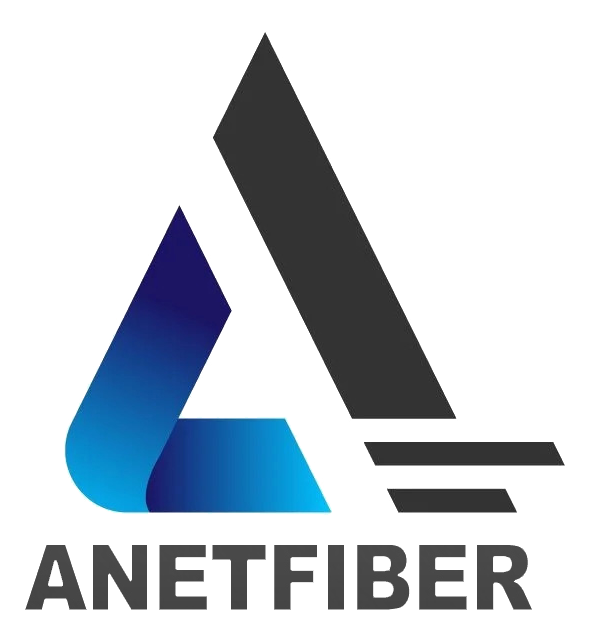5 Cutting-Edge Advancements in Next-Generation FTTH Technologies

Introduction to Next-Generation FTTH Technologies
The Evolution of FTTH
Fiber to the Home (FTTH) has transitioned from a mere concept to a groundbreaking reality. Initially, it was just an ambitious idea, but with relentless innovation and technological advancements, FTTH has become an integral part of our digital infrastructure. The deployment of fiber optic cables directly to residential homes has revolutionized the internet landscape in unprecedented ways.
Why Next-Generation FTTH Matters
The significance of next-generation FTTH lies in its ability to meet the escalating demand for high-speed internet. As technology continues to advance at a rapid pace, there is an increasing need for reliable and high-bandwidth connectivity. Additionally, next-generation FTTH plays a pivotal role in shaping future technologies, serving as the foundation for upcoming innovations and digital transformations.
Exploring Advanced FTTH Infrastructure Innovations
The realm of next-generation FTTH technology is witnessing a wave of advanced infrastructure innovations that are reshaping the landscape of high-speed internet access. These groundbreaking advancements in fiber optic communication are not only enhancing connectivity and reliability but also paving the way for the future of digital connectivity.
Revolutionary Fiber Optic Broadband Solutions
The advent of FTTH infrastructure innovations has ushered in a new era of revolutionary fiber optic broadband solutions. These cutting-edge solutions are designed to meet the escalating demand for high-speed internet access while ensuring unparalleled reliability. By leveraging state-of-the-art technology, these solutions enhance connectivity, providing users with seamless access to high-bandwidth applications and services. Moreover, they have a profound impact on remote work and education, enabling individuals to engage in virtual collaboration and immersive learning experiences with unprecedented ease.
FTTH Deployment Technologies: Paving the Way for the Future
The deployment of next-generation FTTH technology is underpinned by innovative installation techniques that are redefining the way fiber optic networks are implemented. These FTTH deployment technologies not only streamline the installation process but also contribute to reducing costs and improving accessibility. By leveraging advanced methodologies, such as micro-trenching and air-blown fiber, service providers can expedite network deployment while minimizing disruptions to communities. This approach not only enhances cost-effectiveness but also ensures that high-speed internet access becomes more accessible to a broader population.
The Rise of Gigabit FTTH Networks and High-Speed Internet Access
In the realm of high-speed internet access, the emergence of Gigabit FTTH networks represents a monumental leap forward, enabling users to achieve unprecedented internet speeds that redefine the digital experience.
Achieving Unprecedented Internet Speeds
The benefits of gigabit speeds for users are truly transformative. With download and upload speeds reaching up to 1 gigabit per second, users can seamlessly engage in bandwidth-intensive activities such as ultra-high-definition video streaming, online gaming, and real-time video conferencing. This remarkable speed not only enhances user experiences but also unlocks new possibilities for innovation and digital exploration.
Real-world applications and possibilities abound with Gigabit FTTH networks. From a consumer perspective, these networks empower households to effortlessly connect multiple devices simultaneously without compromising on speed or performance. Moreover, businesses can leverage gigabit speeds to facilitate seamless cloud computing, data-intensive analytics, and virtual collaboration across geographically dispersed teams. The potential for technological advancement in fields such as telemedicine, augmented reality, and smart infrastructure is further amplified by the unparalleled capabilities of gigabit internet access.
The Global Spread of Gigabit FTTH Networks
Case studies from around the world underscore the far-reaching impact of Gigabit FTTH networks on communities and industries. In countries where gigabit connectivity has been widely adopted, there is a tangible surge in economic growth driven by enhanced productivity and innovation. Lessons learned from these global implementations emphasize the critical importance of investing in robust digital infrastructure to support future technological advancements.
Best practices gleaned from successful deployments highlight the need for collaborative efforts between governments, private sector entities, and technology providers to ensure widespread accessibility to high-speed internet access. By prioritizing inclusive deployment strategies and leveraging public-private partnerships, communities can bridge the digital divide and unlock the full potential of next-generation FTTH technologies.
Optical Network Terminal Advancements: Unveiling the Future
The Role of Optical Network Terminals in FTTH
As we delve into the intricate web of next-generation FTTH technologies, it's essential to understand the pivotal role played by Optical Network Terminals (ONTs). These sophisticated devices serve as the gateway between the fiber optic network and the user's premises, translating optical signals into electrical signals that can be utilized by various internet-enabled devices. Understanding the technology behind ONTs unveils their significance in enabling seamless high-speed internet access for residential and commercial users alike.
ONTs contribute to superior internet performance by serving as a bridge between the external fiber optic network and internal Ethernet or Wi-Fi networks within homes and businesses. By efficiently converting optical signals into electrical signals, ONTs facilitate reliable and high-bandwidth connectivity, ensuring that users can harness the full potential of next-generation FTTH technologies without compromise.
Future Trends in Optical Network Terminal Technology
Innovations on the horizon are poised to redefine the landscape of optical network terminal technology, ushering in a new era of enhanced performance and functionality. As we peer into the future, several trends emerge that promise to shape the evolution of ONTs and prepare us for the next wave of internet technology.
One notable trend is the integration of advanced security features within ONTs, fortifying network defenses against cyber threats and vulnerabilities. By embedding robust encryption protocols and intrusion detection mechanisms directly into ONT hardware, users can enjoy heightened levels of data security and privacy, safeguarding their digital footprint from potential breaches.
Another innovation set to revolutionize ONT technology is the seamless convergence with emerging Internet of Things (IoT) ecosystems. Future ONTs are anticipated to seamlessly integrate with smart home devices, IoT sensors, and connected appliances, creating a cohesive network infrastructure that empowers users with unparalleled control over their digital environment. This convergence paves the way for a harmonized ecosystem where FTTH not only delivers high-speed internet but also serves as a catalyst for interconnected smart living solutions.
Preparing for the next wave of internet technology entails equipping ONTs with advanced Quality of Service (QoS) capabilities that prioritize critical applications and services. By intelligently managing bandwidth allocation based on application requirements, future ONTs ensure optimal performance for real-time communication tools, video streaming services, online gaming platforms, and other bandwidth-sensitive applications.
Conclusion: The Impact of FTTH Technology Trends on Our Lives
Reflecting on How FTTH Has Shaped Our Digital World
As I ponder the profound impact of FTTH technology trends, personal anecdotes and industry insights underscore the transformative nature of high-speed internet access. From a personal standpoint, the seamless connectivity facilitated by next-generation FTTH has redefined the way we interact with digital content and engage in online experiences. Whether it's streaming ultra-high-definition content or participating in virtual meetings, the pervasive influence of FTTH is evident in every facet of modern digital living.
Industry insights further illuminate the far-reaching implications of FTTH technology trends. The widespread adoption of gigabit FTTH networks has catalyzed innovation across diverse sectors, empowering businesses to harness the full potential of high-speed internet for enhanced productivity and collaboration. Moreover, educational institutions have leveraged advanced FTTH infrastructure to facilitate immersive remote learning experiences, transcending geographical barriers and broadening access to knowledge.
Looking Forward: The Future of High-Speed Internet Access
Envisioning a world connected by next-generation FTTH evokes a landscape characterized by ubiquitous high-speed connectivity and boundless digital possibilities. As technology continues to evolve, next-generation FTTH is poised to serve as the cornerstone of a digitally interconnected society where individuals seamlessly navigate an ecosystem of smart devices and immersive digital experiences.
The future holds promise for even greater advancements in FTTH technology, paving the way for enhanced user experiences and unprecedented connectivity. By embracing a future where high-speed internet access is not just a luxury but a fundamental right, we can envision a world where next-generation FTTH empowers individuals, businesses, and communities to thrive in an increasingly interconnected global landscape.
In conclusion, the impact of FTTH technology trends extends beyond mere connectivity; it encompasses empowerment, innovation, and inclusivity. As we embark on this journey towards a future shaped by next-generation FTTH technologies, we are poised to witness a paradigm shift in how we perceive and experience the digital realm.
Let's embrace this future with open arms as we chart new frontiers enabled by the remarkable capabilities of next-generation FTTH technologies.
See Also
Revolutionizing Data Transmission with 4 Advanced Fiber Optic Innovations
Unveiling Symmetrical Gigabit Speeds: The Next FTTH Frontier
Enhanced Connectivity: 5 Cutting-Edge Fiber Optic Splicing Innovations
Revolutionizing Cloud Computing: 5 Key Fiber Optic Advancements
Exploring Advanced Materials: The Future of Optical Fiber Cable Trends


